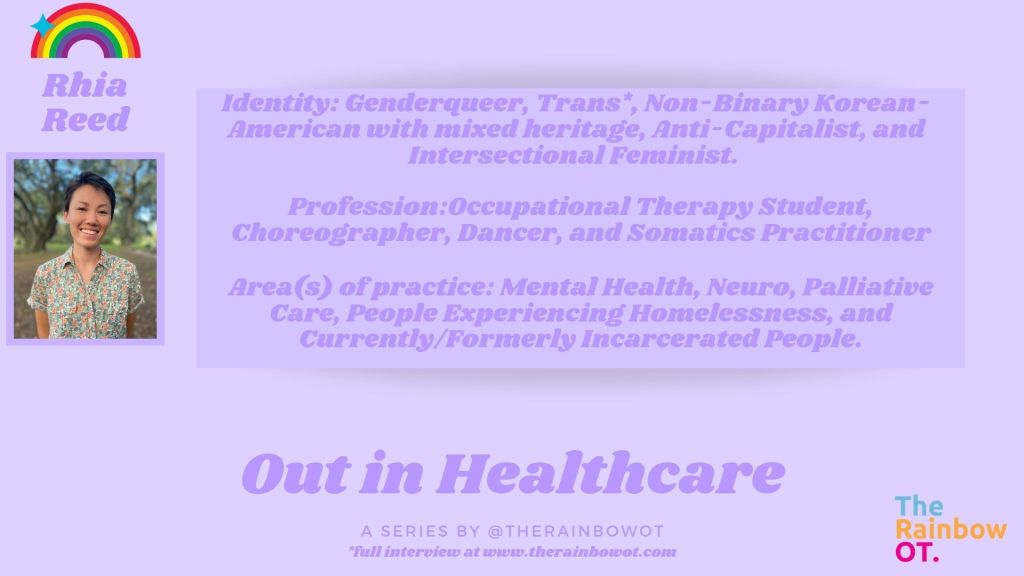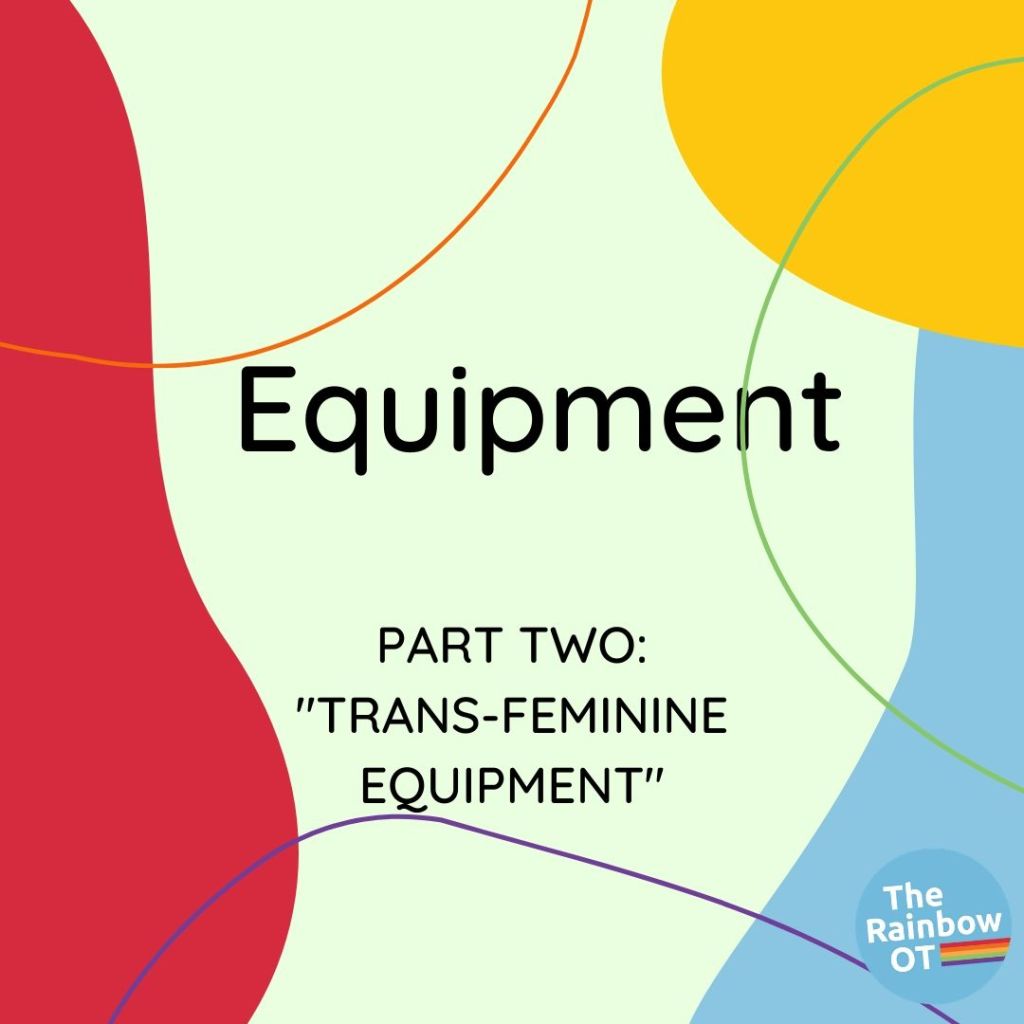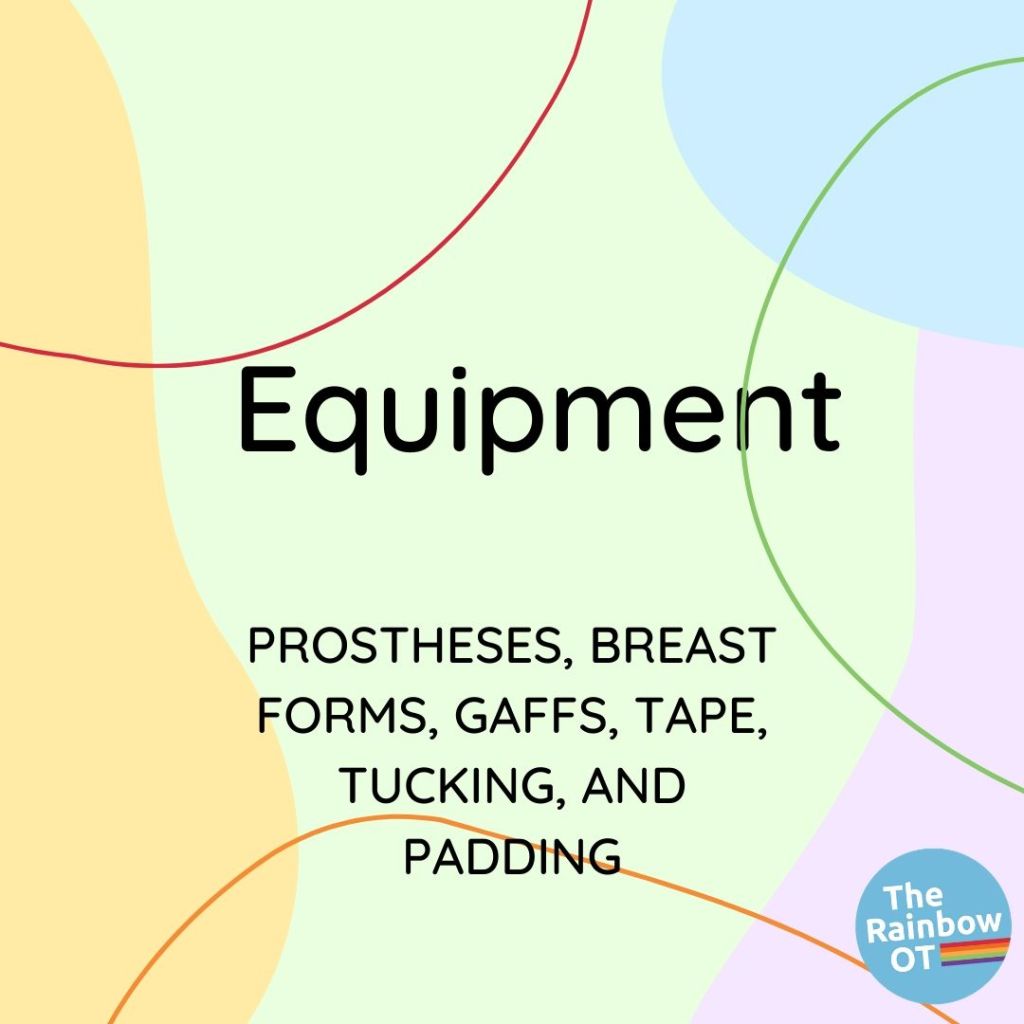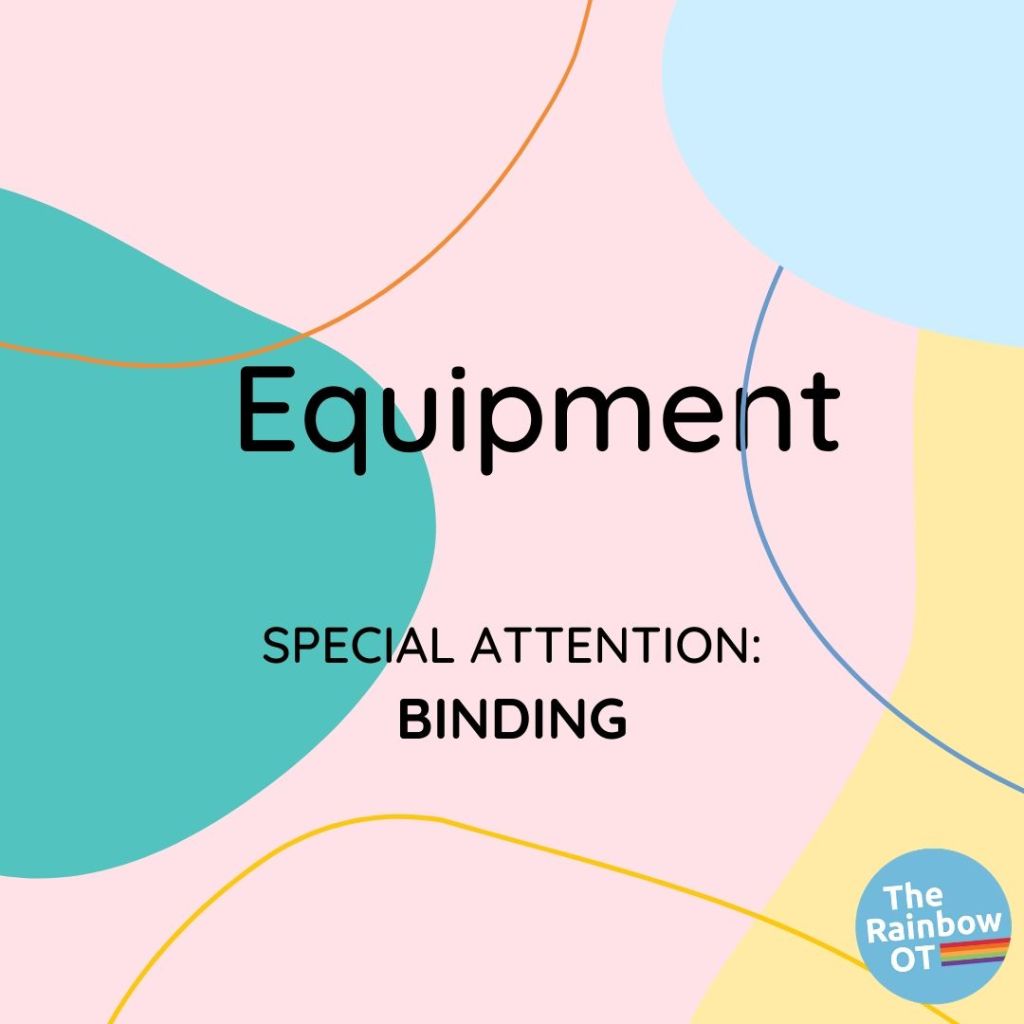
Name: Rhia Reed
Pronouns: They/Them
Identity: I am a genderqueer, trans*, non-binary Korean-American with mixed heritage. I also identify as an anti-capitalist, intersectional feminist committed to the life-long work of anti-racism.
Background: My background has been primarily as a choreographer, dancer, and somatics practitioner. I am currently in school for Occupational Therapy.
Profession: Occupational Therapy
Area(s) of Practice or Interest: I’m most interested to work within the following areas of practice: mental health, neuro, palliative care, people experiencing homelessness, and currently/formerly incarcerated people.

What does being ‘Out in Healthcare’ mean to you?: Currently, I help organize a monthly zoom meeting for fellow trans/gender non-conforming (TGNC) occupational therapy students and practitioners; sign-up link below. On a more personal note, being out in healthcare means being a resource to colleagues, and one day as an advocate for my patients. I am the first trans* non-binary person that most of my classmates and professors have met, and I don’t take that lightly. I see these relationships as a huge opportunity to be a representative for the TGNC community. My hope is for my peers to feel comfortable to work through their questions and ignorance with me instead of with future TGNC patients. Once I become a clinician, I hope to create a safe space for all of my patients, especially those of trans experience. My long-term goal is to continue my work as an advocate for trans patients within the scope of occupational therapy and the greater healthcare field.
What is one thing everyone should know about your identity?: I love to laugh at myself as much as I take my identity seriously. Sometimes I joke that my gender identity is simply Tired. On other days it feels Expansive. Most days it feels Fluid.
How do you feel when your identity is included?: Whew, what a question! It is impactful to feel seen! Moments where I don’t have to direct effort to be visible or taken seriously, I feel like I can direct my energy toward all of the other things that I am passionate about. I don’t need others to validate my identity, but it’s definitely a nice surprise when the things that make me me are seen and valued. It makes me feel safer to be me.
What does “taking up space” mean to you?: First, I think of the word marginalized and what that means in a literal sense. If you’re running out of space when writing on lined paper, you end up writing in the margins. “Taking up space” means putting whatever has been relegated to the margins front and center. Pragmatically, this means reallocation of opportunities, attention, time, money, access, and resources. It’s worth mentioning that taking up space isn’t something to apologize for or feel bad about. I love to loudly celebrate members of the Queer, TGNC community.
What is one piece of advice that you would give to healthcare workers who aren’t sure how to honor the identities of their patients?: Great question! Ask questions and be patient with yourself while you are learning something new. Practice compassion and release shame. When getting things wrong, we often feel ashamed, but everyone makes mistakes. Shame bends a person’s attention inward toward their shortcomings. Instead, compassion maintains attention outward at the person they are helping. Shame is just a story we tell ourselves about ourselves to keep us small: “I messed up and I’m terrible.” Self-compassion is a different narrative: “I messed up and I’m learning. I can try again.” Compassion and mindfulness propel us to say “I messed up, and I see how my actions caused harm. I want to center that person’s experience instead of focusing on my mistake.”
Has your identity influenced healthcare that you’ve received?: Yes…I’ll keep it brief by saying that sometimes I often allow myself to be misgendered and avoid disclosing my identity out of self-preservation.
Where can people find you?: mreed9@lsuhsc.edu, and here’s the sign-up sheet for the monthly TGNC OT meeting: Click here!






